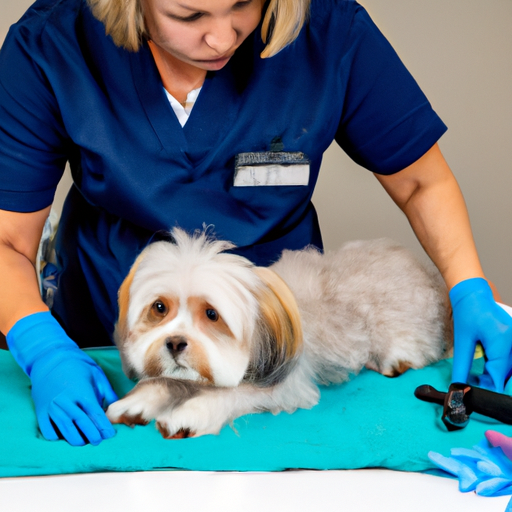Understanding Your Dog’s Anal Glands
You might not be aware, but your loyal companion has two small glands located just inside the anus. These glands, known as anal glands, are part of your dog’s scent marking system. Unfortunately, they can become blocked, causing discomfort and potentially leading to infection. It’s a dirty job, but as a dedicated caregiver, you can learn to clean them yourself.
When and Why You Should Clean Your Dog’s Anal Glands
Your dog’s anal glands should empty naturally when they defecate. However, if your dog has softer stools, or if the glands become overfilled, they may not empty properly.
Signs your dog may be having an issue with their anal glands include:
- Scooting their rear end across the floor
- Licking or biting at their rear end
- Swelling or redness around the anus
If you notice these symptoms, it’s time to take action.
How to Clean Your Dog’s Anal Glands
Let’s get into the nitty-gritty. Before you start, gather your supplies:
- Latex gloves
- A soft, clean cloth or paper towels
- A gentle pet-friendly cleanser
Step-by-Step Process:
- Lift your dog’s tail gently, exposing the anus.
- Locate the anal glands. They are situated at approximately 4 and 8 o’clock positions.
- With your thumb and forefinger, apply gentle pressure on each gland, pushing upwards and inwards.
- Wipe away the secretion with the cloth or paper towels.
- Clean the area with the pet-friendly cleanser.
Precautions While Cleaning Your Dog’s Anal Glands
This procedure isn’t without risk. It can be uncomfortable for your dog, and if done incorrectly, could lead to injury. Here are some precautions to take:
- Always be gentle. Applying too much pressure could cause injury.
- If your dog seems excessively uncomfortable or if there is blood in the secretion, contact your vet immediately.
- Never attempt this procedure if your dog has a known anal gland abscess.
Regular Maintenance and Diet for Optimal Anal Gland Health
A healthy diet can promote firmer stools, which can help keep your dog’s anal glands healthy. Consider these dietary adjustments:
- More fiber: Foods high in fiber can help your dog produce firmer stools.
- Hydration: Ensure your dog has constant access to fresh water.
- Regular exercise: This can help keep your dog’s digestive system moving.
| Dietary Adjustment | Benefit |
|---|---|
| More fiber | Firmer stools |
| Hydration | Improved digestion |
| Regular exercise | Improved digestion and firmer stools |
Frequently Asked Questions
Q: How often should I clean my dog’s anal glands?
A: The frequency can vary depending on your dog’s health. If your dog is prone to anal gland issues, you might need to do it more often.
Q: Can I injure my dog by cleaning their anal glands?
A: Yes, if done improperly. Always be gentle and stop if your dog shows signs of discomfort.
Q: When should I contact a vet?
A: If your dog seems excessively uncomfortable, if there is blood in the secretion, or if you’re unsure about the procedure, it’s always safer to consult a vet.
Remember, there’s no shame in leaving this task to professionals if you’re uncomfortable doing it yourself. It’s all about ensuring the comfort and health of your furry friend.



